When your Scorecard assessment is complete, your assessor will provide you with a customised Scorecard certificate.
Your certificate shows your home's:
- energy star rating out of 10 stars. This represents the relative cost of running the fixed appliances in your home over a year
- comfort rating, showing how well your home copes with hot and cold weather
- star rating with and without solar power
- efficiency ratings for each of the fixed appliances such as heating, cooling, hot water service
- energy consumption of the fixed appliances over one year
- greenhouse gas emissions for the fixed appliances over one year
- provides practical options to improve your home’s energy efficiency.
Your assessor will talk you through the home energy rating certificate, discuss ways you could use your appliances differently and help you to prioritise any recommended upgrades so you can reduce your energy bills and increase the comfort of your home.
Example Scorecard certificate
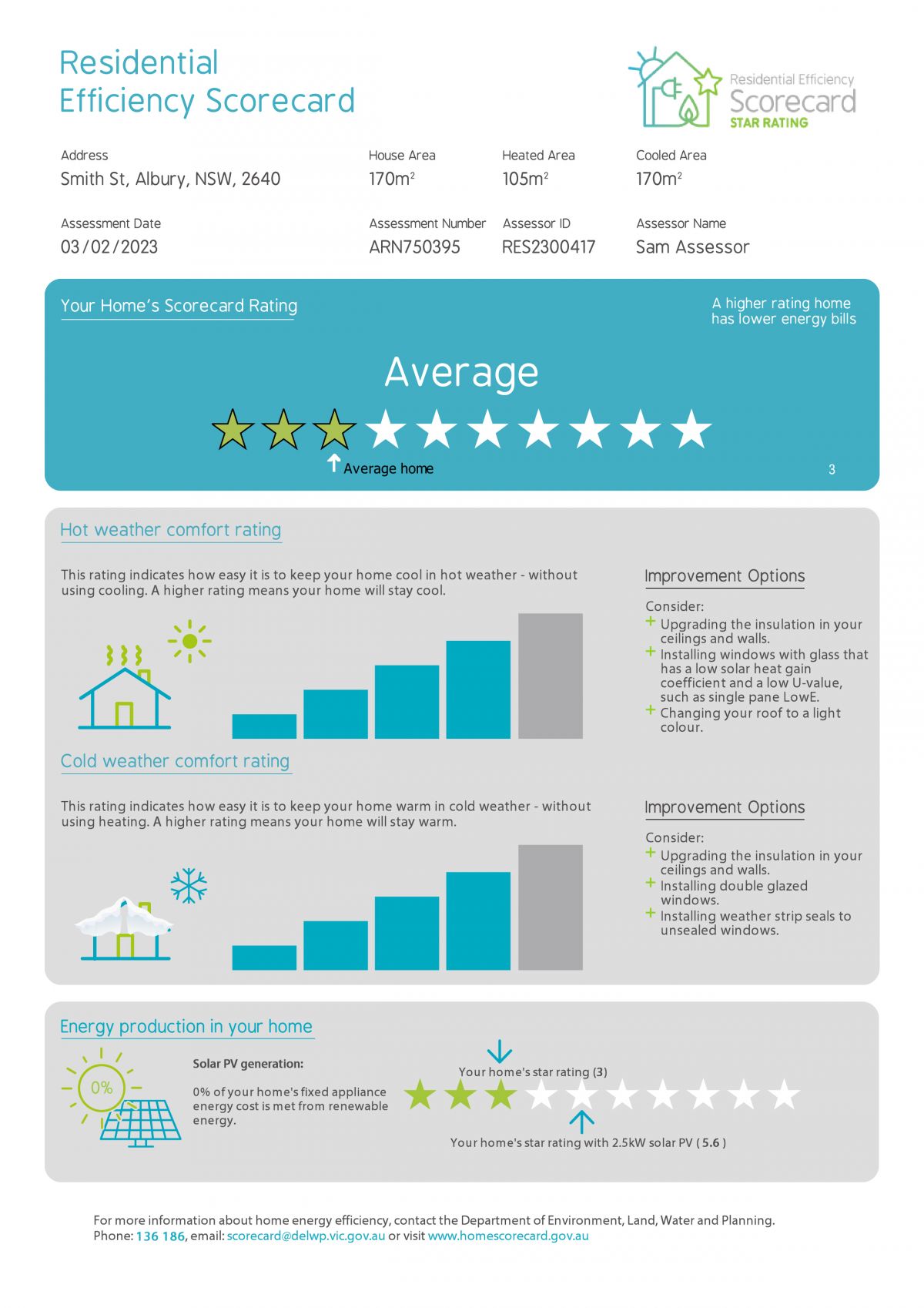

The Scorecard star rating
The star rating reflects the average energy costs of the home over a year. Just like the star rating for your washing machine, the higher the stars the lower the cost to run.
Three stars is the average rating for Australian homes.
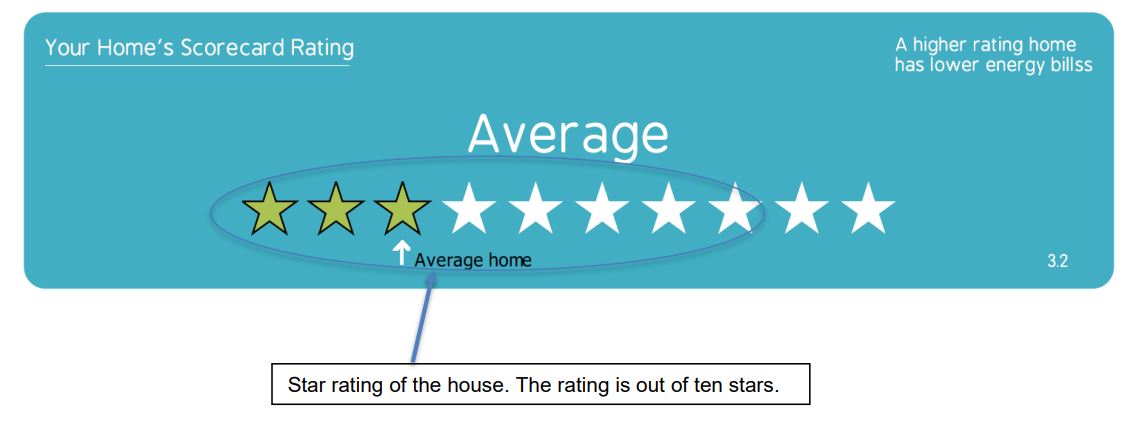
Hot and cold weather ratings
This section of the certificate shows how comfortable your home is in summer and winter without any cooling or heating. It's easy to see how important your home's insulation and thermal shell is, as this will impact your comfort rating.
A low comfort bar rating means that heat can move relatively easily from outside the home to inside and vice versa. Even if you have efficient appliances you will be using them more to maintain a comfortable temperature, costing you more. Therefore, investing in your home's thermal shell is a great way to reduce your energy bills and stay comfortable in your home.
Learn more about staying cool in summer and warm in winter, and consider these ideas when planning renovations and upgrades.
Being comfortable in your home is important, so aim for the highest bar rating possible.

Energy production
This section of the certificate shows your home’s rating with and without solar power (you may know this as solar PV or a solar array).
If you do not have solar power it will show your current star rating, plus the rating if you installed a 2.5kW solar power system.
If you do have solar power it shows your home's current star rating, plus your home's star rating without solar power. This helps to show how much of your energy use is being offset by solar power, with the number on the left hand side showing what percentage of your energy costs are met by your solar power generation.
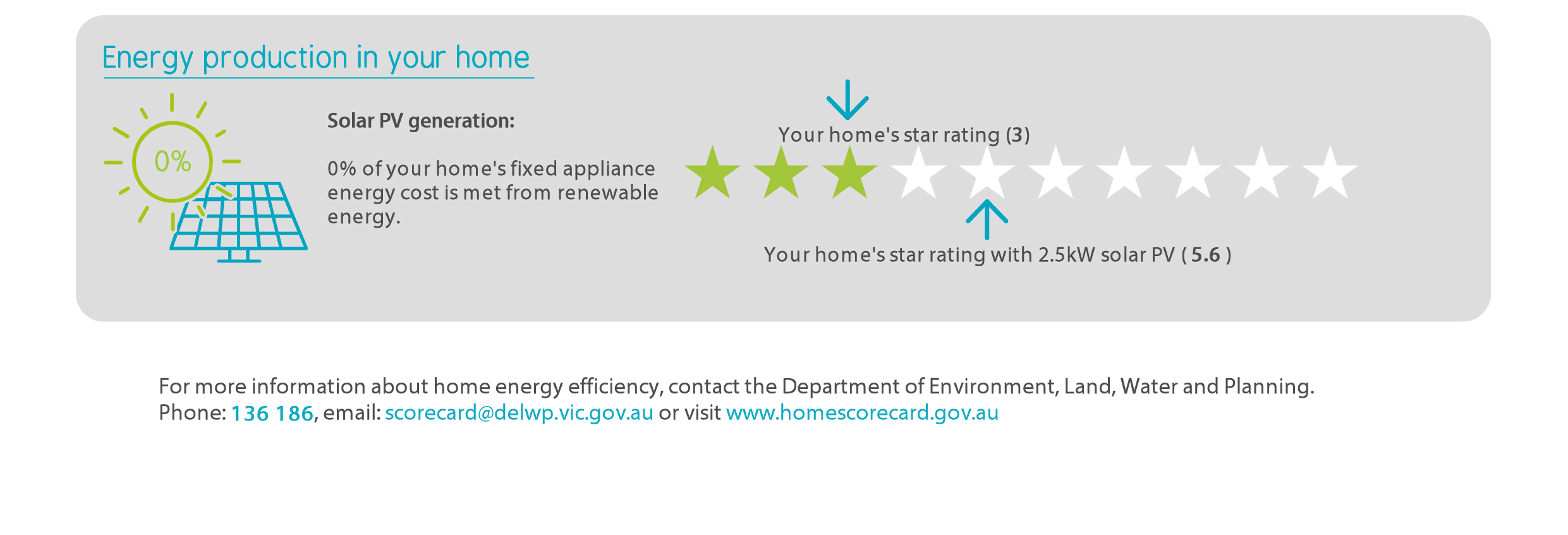
Appliances
This section shows each major appliance and the percentage of your home's total energy cost that it uses. This makes it easy to see which appliances are using the most energy. It also provides a number of options to improve or upgrade these appliances. These options give the highest cost savings as calculated by the Scorecard tool. To tailor these upgrade suggestions, discuss your particular needs with your Scorecard assessor.
Each appliance is rated out of five. Consider upgrading any appliance that rates three bars or fewer.
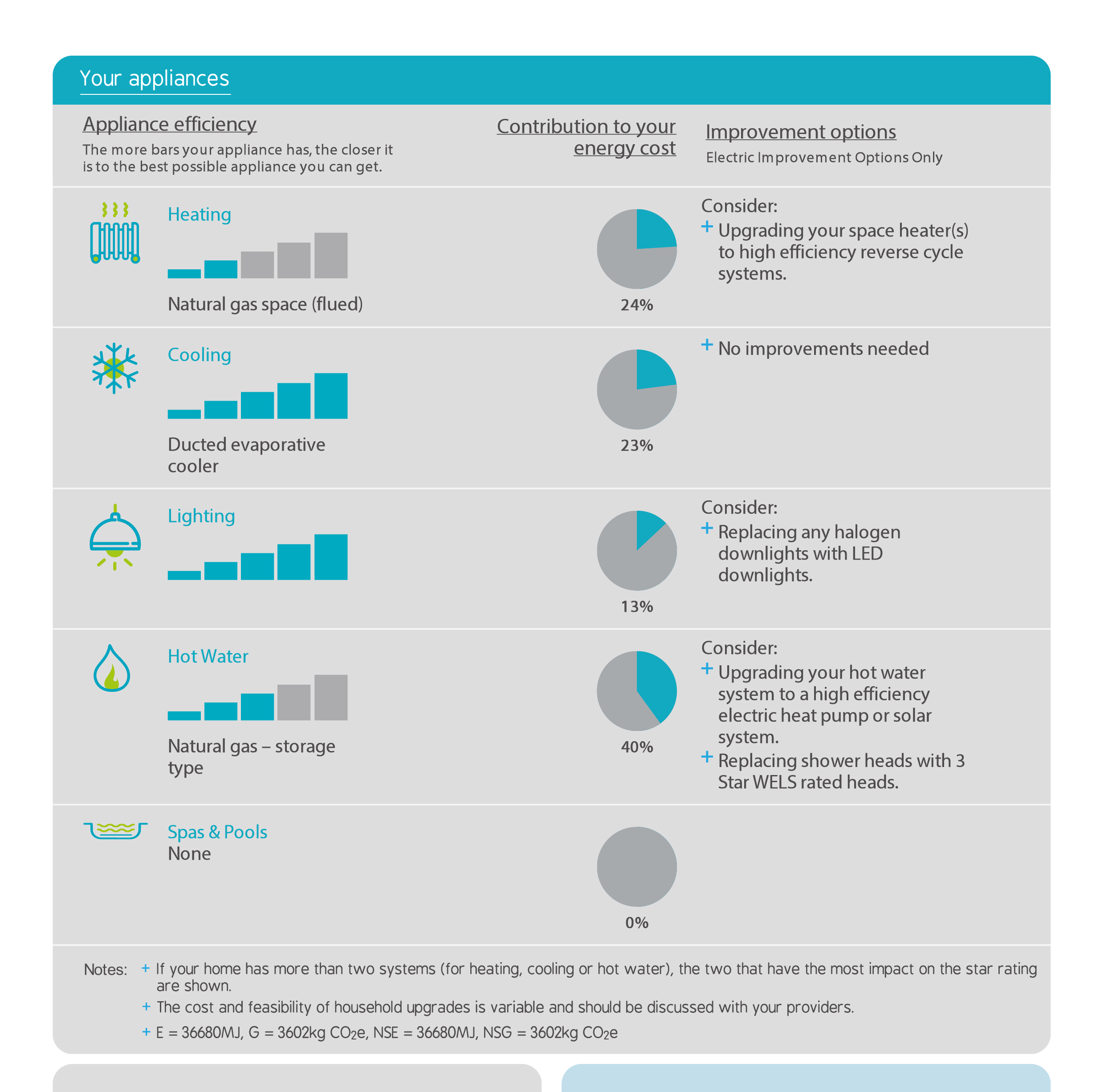
Greenhouse gas emissions and other valuable features
This section of the certificate shows the greenhouse gas emissions of your home in kilos of equivalent CO2. Your Scorecard assessor can help you understand what this means, and how to reduce emissions.
The next section titled 'Other valuable features' shows a selection of great features your home may have, that aren't included in the Scorecard software tool calculations. These include: shading plants, battery, an all-electric home, outdoor living area.
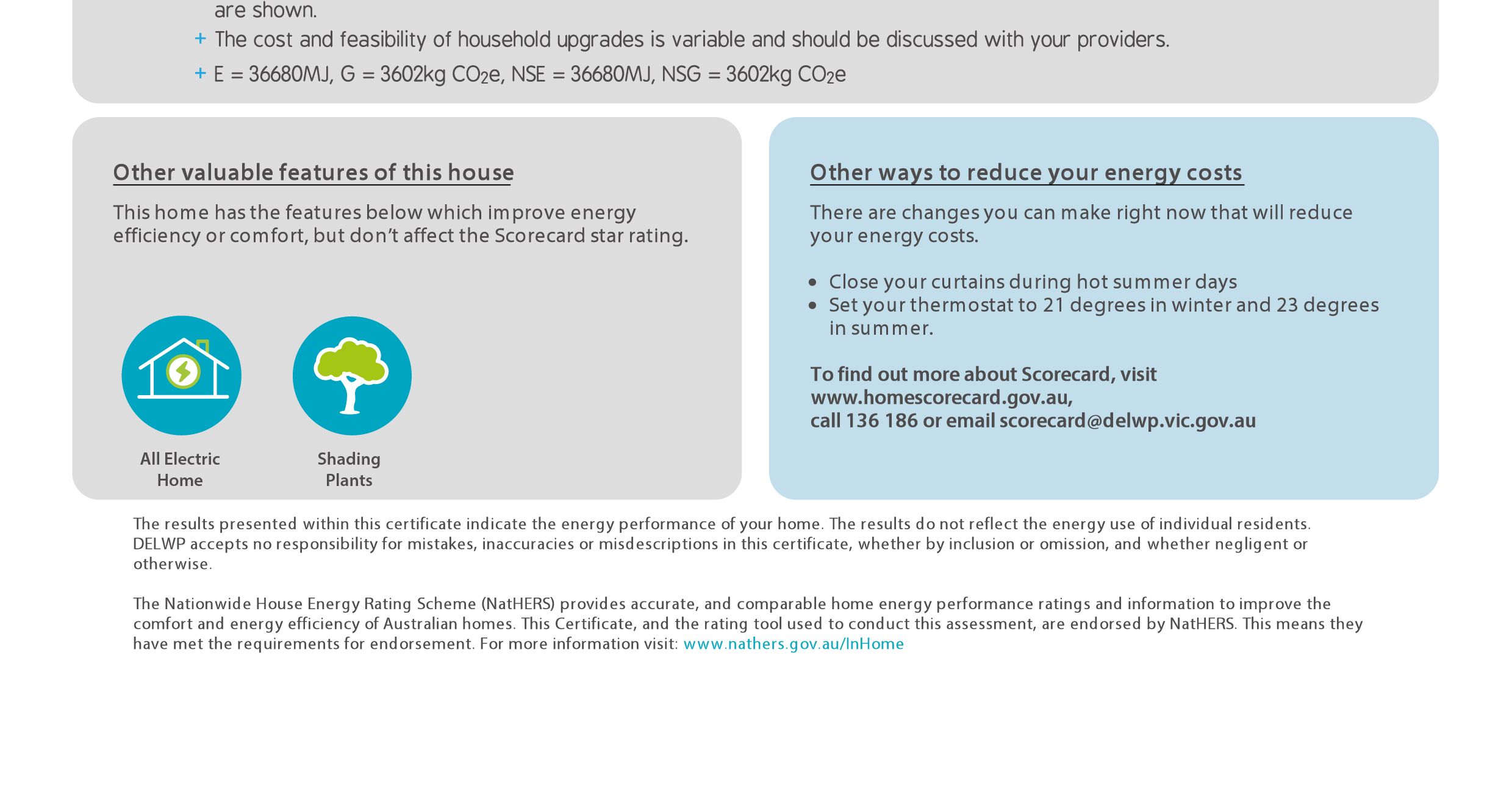
Page last updated: 10/04/24